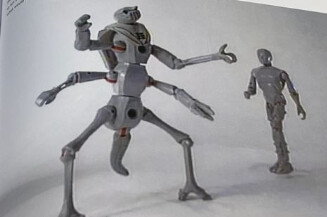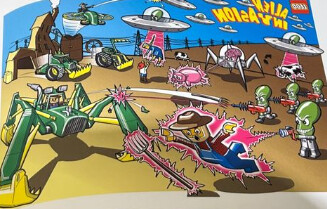Hence why I said my friends had these reactions, not myself. My education is in business, I ran a small company myself, I speak to the presidents of companies (various sizes) as IT rep for my employer; I am well aware of the typical practices at this scale. I don’t state my feelings on the matters specifically regarding Technic out of ignorance but disappointment. Hence my statements about the Hexbug comparison as well, I know the market I’m trying to hit and the challenges thereof. The only thing I don’t know for certain is which bar of success the LEGO Group would want.
As do recall, it is not the ability to make a profit, but how much of a profit that is a primary concern. In which from another source, the Bits N’ Bricks podcast, an official LEGO Group sponsored podcast talking all things LEGO Games, in their episode about Nexo Knights stated that the bar of success for new themes, most likely story-action themes (Legends of Chima, Nexo Knights), is that they have to meet or surpass Ninjago’s sales in their first six months to a year. So I am certainly more aware than your average Lego fan and, quite honestly, closer to a toy enthusiast watching the entire industry.
However, there were many things I still didn’t know, despite all the books, magazines, employee interviews, official podcasts, and other materials I’ve consumed. And the book did confirm plenty other things, for which I am grateful to know. Especially how scale is determined and used within Lego and that I’m pretty much vindicated in saying that Minifigs don’t fit the system or scale well. Alongside the general oddities of Lego’s incomparable building scales to pretty much anything else.
But it also confirmed something else that I had figured for years and years, despite popular narrative. Especially here in the Bionicle fandom, it is believed that Bionicle’s downfall was having too many specialized molds, pieces, one-off parts, etc. Yet, even after Bionicle’s time, even themes like Ninjago would continue to do exactly what Bionicle did. And, ultimately, it was the LEGO Group who decided to make the pieces that way. Can it really be a failing if that was part of the plan, if that cost was already accounted for in the budget?
And the book confirms that it wasn’t a primary factor. The LEGO Group has been operating on a system known as “Frames” decades before Bionicle was even a thought. They have a limited new parts budget, this is already taken into account. In terms of part design, there are quotes from designers explaining why specialized, only one-way/one-time use pieces are good. That quite frequently, they’ll make pieces less viable for other options on purpose as it makes the building experience easier for their target audience. This is all done on purpose and wasn’t really the practice that got the LEGO Group into its financial trouble.
You see it more so in Brick by Brick: How LEGO Rewrote the Rules of Innovation and Conquered the Global Toy Industry, than in other sources, but the LEGO Group didn’t do what are today basic industry standard business practices. No tracking or having a library of parts, poor inventory, not tracking sales and certainly not tracking sales of individual sets, not understanding how to market or sell their sets with the box art (why Technic sets were skeletal for so long, to show off their functions because marketing was too hard), failing to explain their product to retailers (see the Galidor sections of the Secret Life of LEGO Bricks for that), etc. The LEGO Group’s financial troubles were the results of their decisions in the early 80’s and reacting poorly, learning all the wrong lessons until lucking out into financial stability and finally able to nail down some problems.
I could go on, but I’m sure you get the point. As for being offended…
looks around at my posting history
Trust me, I’m not one to who gets offended easily. Though the reverse could not be said.





